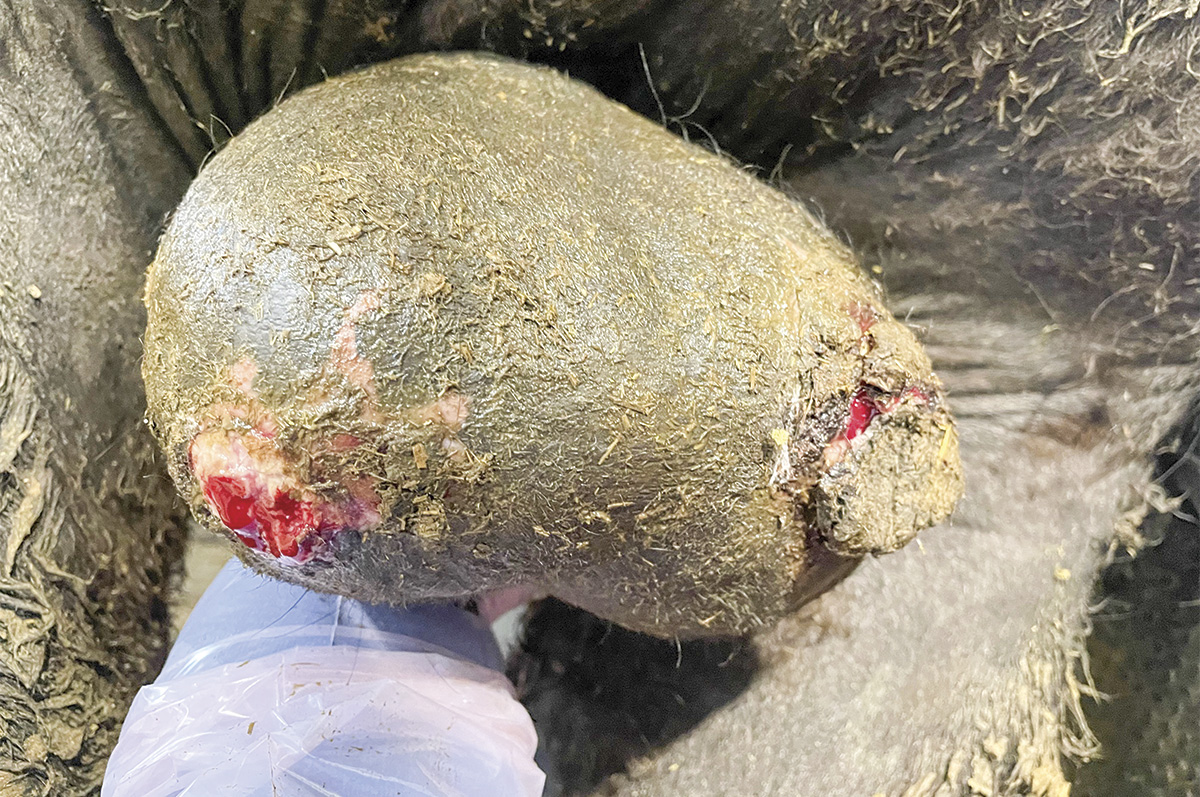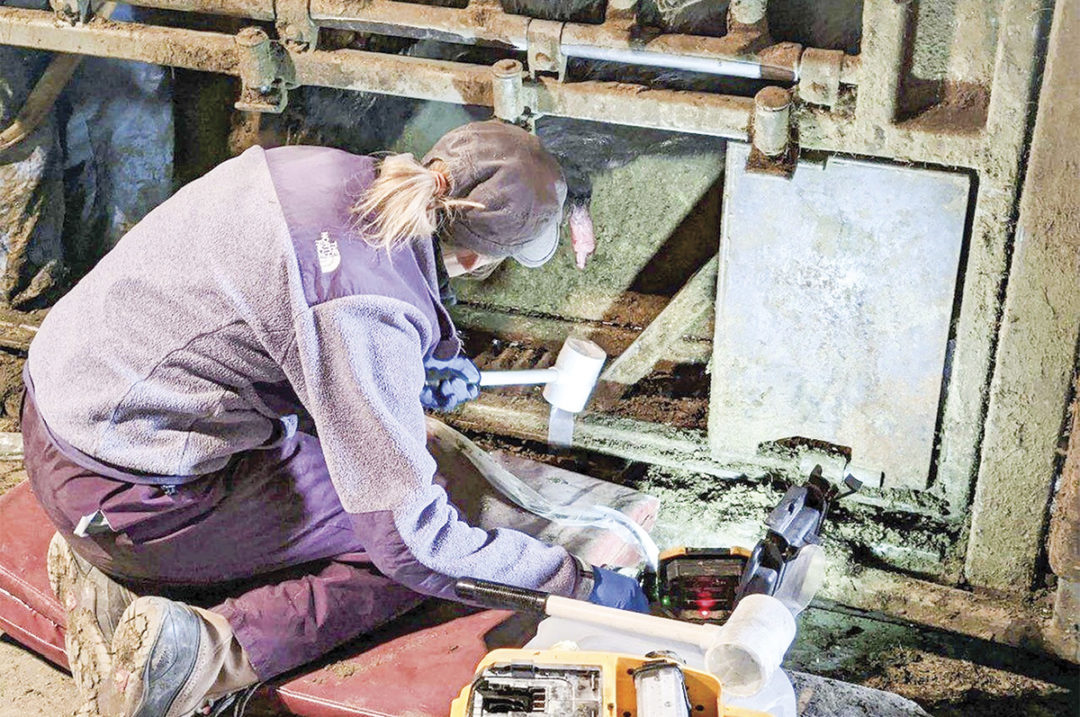Your herd’s reproductive health is too important to leave to fate.
While statistically, most mature bulls, year in and year out, are going to be satisfactory breeders, if you're on the wrong side of those numbers and you bet wrong on that gamble, it can have a huge impact on your bottom line. I can't emphasize enough the importance of testing all of the bull battery. This includes any new or yearling bulls recently purchased – even those tested earlier in the year. While they may have had a breeding soundness exam done prior to sale day, those are bulls that still need to be reassessed before turning them out. Things can – and do – change rapidly with a bull's health, and that can have a serious impact on their semen quality.
A rather typical timeline is for a bull to be sold in April. His first breeding exam may have been done in February. It’s possible the bull may not be delivered to a producer until May for turnout in June – therefore, four months have gone by since that yearling bull had his last semen evaluation. That's enough time for things to change – possibly for the better or unfortunately for the worse.
What a breeding soundness exam entails
The purpose of a breeding soundness exam is to assess a bull’s ability to service cows and to identify subfertile or infertile bulls. A breeding soundness exam should be conducted on all bulls four to six weeks before turnout on pasture to provide time to intervene, should a treatable abnormality be detected. Common health problems identified include infections of the reproductive tract, lameness, penile warts or other anatomic abnormalities that can impede a bull’s ability to service a cow, or really any disease that could impact the bull’s overall health, which can have effects on semen quality and production.
Routine assessment includes an examination for physical soundness – such as hoof structure, body condition, scrotal circumference and penile extension – as well as an assessment of sperm production ability and semen quality. A breeding soundness exam reflects the bull’s breeding soundness on that day, and the sperm assessed at that time are a result of spermatogenesis from more than 60 days prior to the breeding soundness exam. The motility of the sperm is tested to see what percent are moving progressively forward – a minimum of 30% should be alive and swimming in a forward direction. Morphology (proper structure) of the semen is also assessed; the bull must have at least 70% normal sperm cells to pass.
Additionally, bulls are palpated rectally to ensure normality of internal structures and seminal vesicles. It isn’t uncommon for young bulls to get infections within the seminal vesicles. This can show up as white blood cells in the semen sample, which would be a reason to defer or possibly fail a bull, and treatment with antibiotics would be required. Yearling and younger bulls tend to have a higher fail rate. Bulls often overcome maturity defects when identified early, but this is not always the case, so we can’t just assume the maturity defects that have a negative impact on fertility will go away. I prefer to wait at least three weeks to retest, so I’m giving the bull a chance to resolve these maturity defects or fight off the infection if they were treated.

This is an example of the damage scrotal frostbite can do. Photo provided by Lacey Fahrmeier.
Contributing factors to be aware of
As living beings are faced with stressors, the reproductive system is the first thing that goes on the chopping block. Meaning, the body no longer delegates resources to the reproductive system, which can impact a bull's ability to produce semen. A number of events or risks can impact semen quality and bull productivity, including:
- Stressful events such as severe weather challenges
- Scrotal frostbite
- Injury effects compounded by chronicity
- Poor nutrition or mineral program
- Missed or inconsistent feedings
- Pain associated with lameness
- Health challenges (i.e., high parasite load, respiratory disease)
- Excess fly pressure
Ensure success with a solid health program
Try to do everything you can to ensure the bulls stay healthy prior to and throughout the breeding season so that they're in tiptop shape to go out and get the job done.
For a bull’s success, provide proper nutrition (even in the offseason), and be sure they are included in your herd health program. It is important that they receive vaccinations against common diseases in your area and, of course, the best resource to guide you on this topic is your herd veterinarian. Generally, the major viral respiratory and reproductive pathogens (bovine viral diarrhea, infectious bovine rhinotracheitis, bovine respiratory syncytial virus, parainfluenza type 3), as well as bacteria such as leptospirosis and clostridial diseases should be included in your vaccination plan. Other considerations, depending on disease prevalence, might be to include a foot rot and pinkeye vaccine. Fly control is extremely important for your entire herd, especially the bulls. Bulls tend to attract an even higher fly burden than cows. We want to make sure that they aren't so preoccupied with fighting flies that they're not concentrating on the job at hand. I recommend using tools like fly tags, sprays and incorporating insect growth regulators or natural insect repellent components like garlic into your mineral program to keep the fly population down.
In today’s beef industry, we are faced with many external forces beyond our control that greatly impact an operation’s profitability (weather, regulations, operating costs, volatile markets, etc.). We have to manage risk wherever we can; don’t gamble on your herd’s reproductive efficiency and health. The time and resources invested in your bull’s breeding soundness exam and proper health plan is the best insurance you can buy to ensure you are turning out a herd sire that is capable of getting the job done and will give you the best chance at success.









